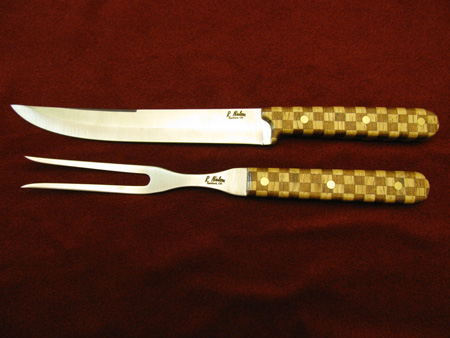
Here's My Woodworking!
by Ron Nielson
Sanford, CO
Click on any picture to see a larger version.
These are a few of the knives and letter openers I have made. Of course I use the wood slicer blade to cut all the pieces. The pictures below show a Santoku kitchen knife I made. The wood is some pieces of Mesquite and Hickory that are stabilized prior to being cut and then glued together. They are finished with a tung oil blend, and I have had good service from these unusual handles.
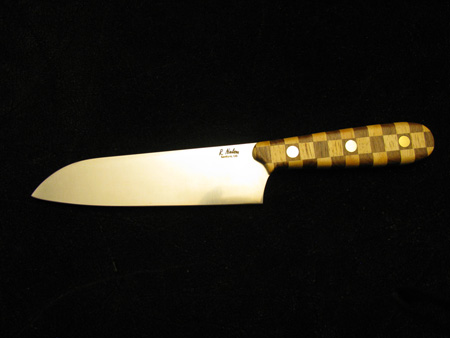
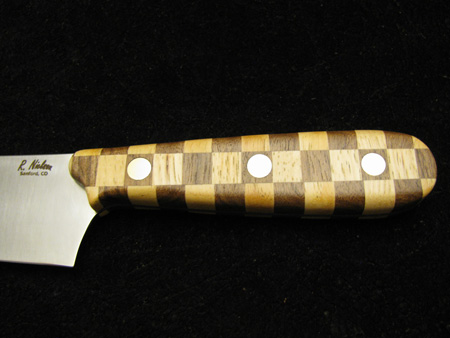
The next two photos show a matching fork and carving knife with the same Mesquite and Hickory checkerboard handles using smaller pieces than what I used for the Santoku knife. The Santoku knife has 3 rows of alternating Mesquite and Hickory pieces, and the fork and carver has 4 rows of alternating pieces. These are just what the BBQ chef needs, and of course they are made from the two most popular BBQ and smoking woods.

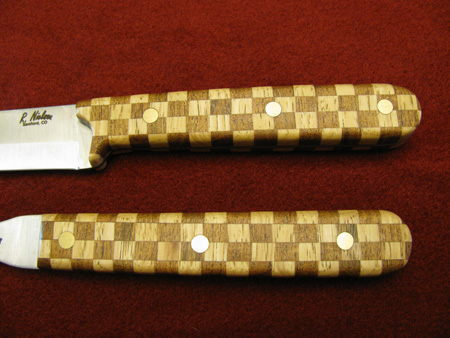
The blades of the knives and fork are made of 440C stainless steel. Knife blades are made by one of two methods which are: 1. Forge method, which is heating to the desired temperature and hammering the blade on an anvil to the shape you want. 2. Stock removal, which requires grinding the steel down to the shape you want, (i.e. grind off the excess material from the bar you begin with). Both methods require heat treatment (hardening), followed by tempering. I am an old duffer and the blacksmith trade comes down from my grandpa who made his living as a blacksmith. These blades are made by the stock removal method.
The handles, which I refer to as BBQ Wood, are cut from firewood log size pieces of Mesquite (the dark wood) and Hickory (the light wood) using a Wood Slicer blade. I am very impressed with the Wood Slicer blades: I use them to cut the hardest exotic woods on earth with excellent results. The wood slicer has such a thin kerf I don’t end up with as much $80 per board foot saw dust as I did with the blades I used to use. The handles are made by alternating the colors of the mesquite and hickory in a checkerboard pattern. I cut the wood, plane it to thickness and run it through a jointer. Every piece of the wood is stabilized with my own process using heat, pressure and vacuum to get the stabilizing solution completely throughout the wood. The clamping and gluing was challenging, and I experimented a lot until I got it right. The stabilizing process helps the wood to keep its shape without warping or distorting, as well as retaining its color. I have used this process with very good results even when washing the knives in the kitchen sink. The time I spent to make the handles was worth the end result. The handles are both bonded and riveted to the blades to keep debris from getting under them.
The last two pictures show a couple of letter openers I made, one using Gabon Ebony and the other Black Cherry Burl.
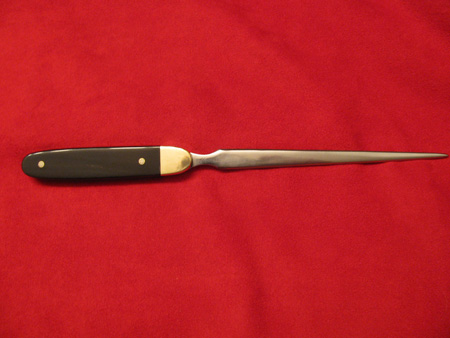
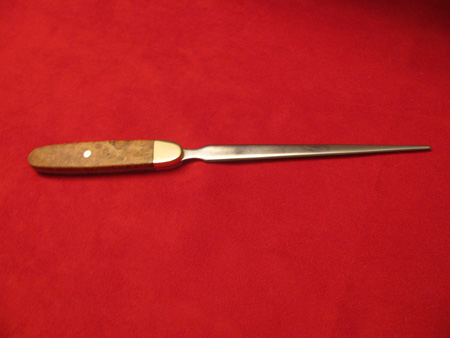
You can email Ron at
coloradoknifemaker@gmail.com
or check out his website at
www.nielsonknives.com
Would you like to see your woodworking in this column? We invite you to
SEND US PHOTOS
of your favorite woodworking projects along with captions and a brief history of your woodworking.
(Email photos at 800x600 resolution.) Receive a $50 store gift card if we show your stuff in a future issue.
Return to
Wood News
front page

